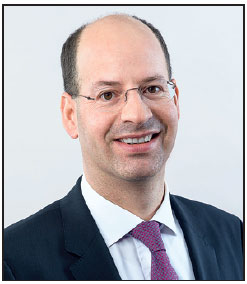Building a strong BRI ecosystem


Jerome Jean Haegeli, Swiss Re Group chief economist
A1 The BRI is expected to bring not only the integration of China and other emerging markets into global development, but also enormous investment opportunities that contribute to economic growth, especially in emerging markets where we see particularly strong demand for infrastructure. The statistics speak for themselves: BRI covers at least two-thirds of the world's population and one-third of global economic output. Swiss Re Institute estimates that infrastructure investment in BRI economies outside of China by 2030 will amount to about $5.1 trillion; in China, it will be about $1.3 trillion. Truly huge opportunities.
A2 The BRI will boost global trade as well as infrastructure investment, especially when financed or cofinanced by the private sector, as it increases productivity growth and hence is positive for society. The BRI will improve connectivity among participating economies, thereby stimulating trade and investment growth, and socioeconomic exchanges.
A3 From the reinsurance/insurance industry perspective, we expect that the total premium potential from construction activities in BRI economies in the years 2015-30 could reach $34 billion, an estimated $21.5 billion of which could be booked to insurers in China. This compares to the total annual premium volume of $21 billion written globally in engineering insurance in 2017 with about $1.5 billion written in China. In all, the BRI will represent a significant increase in the volume of risk the market can absorb.
A4 First, private sector solutions should be further encouraged. We are thinking here about the global retirement savings gap where the private sector can and should play a larger role to alleviate the burden. Second, encouraging public-private partnerships is key. Both the private and public sector bring unique expertise to projects. Third, leverage multilateral development bank balance sheets. Pool individual infra projects and free up risk across the development finance system. This can be done through first-loss guarantee, co-investments with the private sector. And fourth, promote sustainable investment.
A5 Infrastructure investment is good for economic activity as it means investment and job creation, but it also helps the economy to run smoothly. I see sound infrastructure investment as a means to improve economic resilience. In today's lower global growth environment, we need more productivity increasing initiatives.
The reinsurance/insurance industry doesn't just underwrite risk but is also a long-term investor. In fact, their funds under management globally amount to about $30 trillion. Our call for action is to work with the public sector and relevant stakeholders in lowering barriers for private sector investment into infrastructure.




































